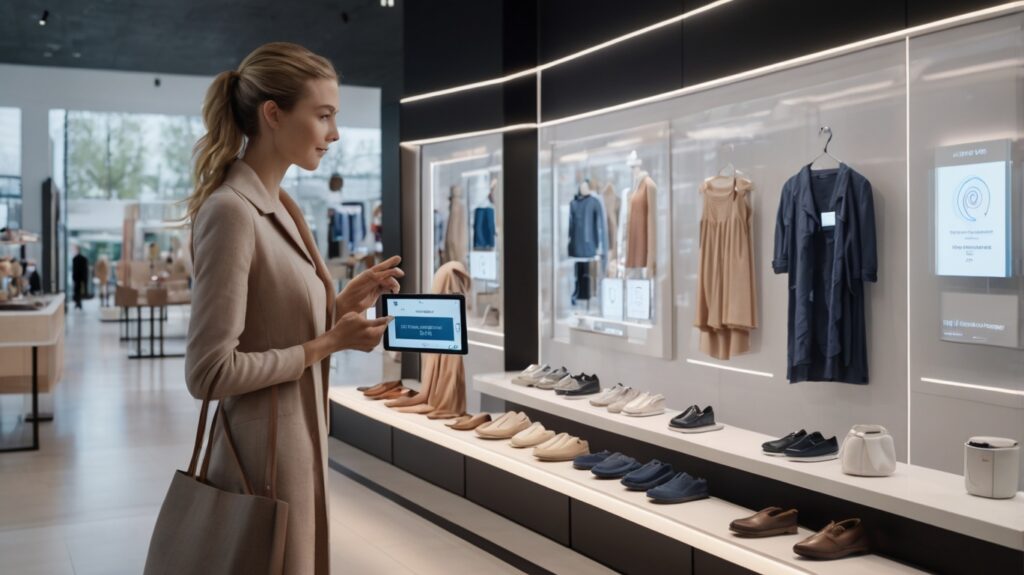The retail industry is undergoing a seismic shift, driven by advancements in technology. Among these, machine learning (ML) has emerged as a game-changer, offering retailers innovative ways to enhance customer experiences, optimize operations, and boost profitability. As consumer expectations evolve, retailers are leveraging machine learning to stay competitive in an increasingly digital marketplace. This article explores the transformative applications of machine learning in retail, highlighting how this technology is reshaping the industry.
1. Personalized Shopping Experiences
One of the most significant applications of machine learning in retail is the ability to deliver personalized shopping experiences. Consumers today expect brands to understand their preferences and cater to their individual needs. Machine learning algorithms analyze vast amounts of customer data, including browsing history, purchase behavior, and demographic information, to create highly personalized recommendations.
For example, e-commerce giants like Amazon and Netflix use recommendation engines powered by machine learning to suggest products or content tailored to each user. These systems not only improve customer satisfaction but also drive higher conversion rates and customer loyalty. In physical stores, retailers are using ML-powered tools like smart mirrors and personalized discounts to enhance the in-store experience.
2. Demand Forecasting and Inventory Management
Accurate demand forecasting is critical for retailers to maintain optimal inventory levels and avoid overstocking or stockouts. Machine learning models analyze historical sales data, seasonal trends, and external factors like weather or economic conditions to predict future demand with remarkable precision.
By integrating ML into their supply chain management systems, retailers can optimize inventory levels, reduce waste, and ensure that popular products are always in stock. For instance, Walmart uses machine learning to forecast demand for thousands of products across its stores, enabling the company to streamline its operations and improve efficiency.

3. Dynamic Pricing Strategies
Pricing is a key factor influencing consumer purchasing decisions. Machine learning enables retailers to implement dynamic pricing strategies, where prices are adjusted in real-time based on factors such as demand, competitor pricing, and inventory levels.
Airlines and ride-sharing platforms like Uber have long used dynamic pricing, but retailers are now adopting this approach to stay competitive. For example, online fashion retailer ASOS uses machine learning to adjust prices dynamically, ensuring that its offerings remain attractive to customers while maximizing profitability.
4. Enhanced Customer Service with Chatbots
Customer service is a critical component of the retail experience, and machine learning is revolutionizing how retailers interact with their customers. AI-powered chatbots, equipped with natural language processing (NLP) capabilities, can handle a wide range of customer inquiries, from tracking orders to answering product-related questions.
These chatbots are available 24/7, providing instant support and freeing up human agents to focus on more complex issues. Sephora, for instance, uses a chatbot on its website and mobile app to help customers find products, book appointments, and receive personalized beauty advice.
5. Fraud Detection and Prevention
Retailers face significant challenges in combating fraud, particularly in the e-commerce space. Machine learning algorithms can analyze transaction data in real-time to identify suspicious patterns and flag potentially fraudulent activities.
By leveraging ML for fraud detection, retailers can minimize financial losses and protect their customers’ sensitive information. PayPal, for example, uses machine learning to detect and prevent fraudulent transactions, ensuring a secure payment experience for its users.
6. Visual Search and Image Recognition
Visual search is an emerging trend in retail, powered by machine learning and computer vision technologies. Customers can now upload images of products they like, and ML algorithms analyze these images to find similar items in the retailer’s inventory.
Pinterest’s visual search tool, for instance, allows users to discover products by clicking on specific elements within an image. This technology not only enhances the shopping experience but also helps retailers showcase their products in a more engaging way.
7. Customer Sentiment Analysis
Understanding customer sentiment is crucial for retailers to gauge brand perception and improve their offerings. Machine learning models can analyze customer reviews, social media posts, and other forms of feedback to determine whether the sentiment is positive, negative, or neutral.
By gaining insights into customer sentiment, retailers can identify areas for improvement and tailor their marketing strategies accordingly. For example, a clothing brand might use sentiment analysis to discover that customers are dissatisfied with the fit of a particular product and take steps to address the issue.
8. Optimized Store Layouts and Merchandising
Machine learning is also being used to optimize store layouts and merchandising strategies. By analyzing data from in-store sensors, foot traffic patterns, and sales records, ML algorithms can identify the most effective product placements and store layouts.
Retailers like Target and Kroger use machine learning to design store layouts that maximize customer engagement and drive sales. For example, placing high-margin products in high-traffic areas or grouping complementary items together can significantly boost revenue.
9. Predictive Analytics for Customer Retention
Customer retention is a top priority for retailers, and machine learning is proving to be a valuable tool in this area. Predictive analytics models can identify customers who are at risk of churning and recommend targeted interventions to retain them.
For instance, a retailer might use ML to identify customers who haven’t made a purchase in a while and send them personalized offers or discounts to re-engage them. This proactive approach not only improves customer retention but also strengthens brand loyalty.
10. Augmented Reality (AR) and Virtual Try-Ons
Augmented reality (AR) and virtual try-on experiences are becoming increasingly popular in retail, thanks to machine learning. These technologies allow customers to visualize how products will look or fit before making a purchase.
For example, furniture retailer IKEA uses AR to let customers see how a piece of furniture will look in their home. Similarly, beauty brands like L’Oréal offer virtual try-on tools that use ML to analyze facial features and recommend suitable products.
Challenges and Ethical Considerations
While the benefits of machine learning in retail are undeniable, there are also challenges and ethical considerations to address. Data privacy is a major concern, as retailers collect and analyze vast amounts of customer data. Ensuring transparency and obtaining consent are essential to building trust with customers.
Additionally, the implementation of machine learning requires significant investment in technology and talent. Smaller retailers may struggle to compete with larger players who have the resources to leverage ML effectively.
Conclusion
Machine learning is transforming the retail industry, offering innovative solutions to enhance customer experiences, optimize operations, and drive growth. From personalized recommendations to fraud detection and augmented reality, the applications of ML in retail are vast and varied.
As technology continues to evolve, retailers must embrace machine learning to stay competitive in an increasingly digital world. By leveraging the power of ML, retailers can not only meet but exceed customer expectations, paving the way for a brighter future in retail.











